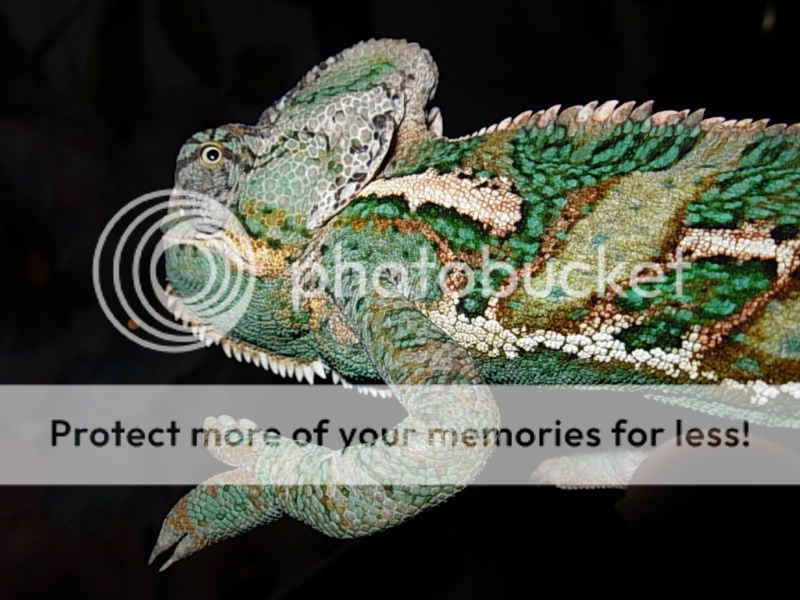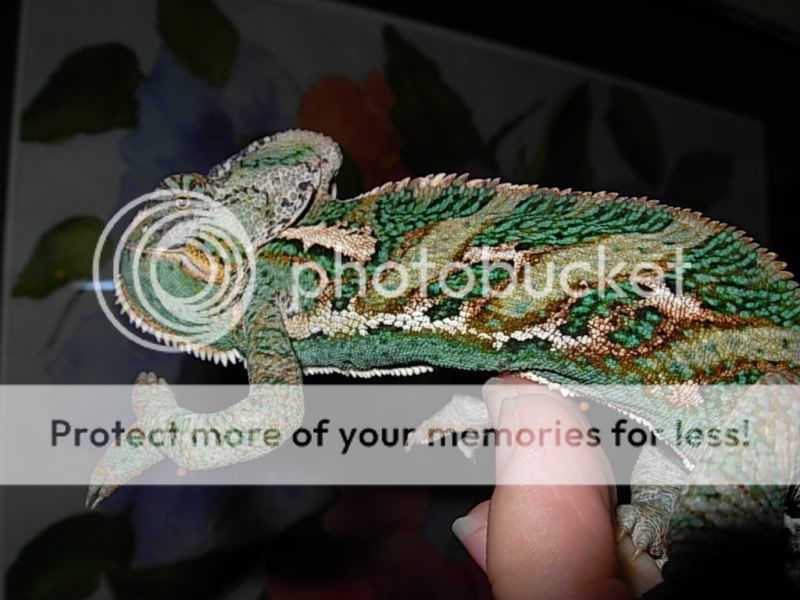Julirs
New Member
I think it is important to share the stories of these guys. If you have never owned or seen a chameleon with MBD, it might not be as obvious to you. We have seen members join that have chameleons with very advanced MBD and never knew it.
So here are the stories of my special chams...
Remy...A forum member asked me to take Remy in when he was about 8 months old. This was his first chameleon. He came from Screameleons-from a very nice blue bar line-complete with the cage kit, lights, etc. As far as I can tell everything was spot on for this guy except for a lack of supplementing and possibly adequate gut loading. Here is the thread when I first got him...
https://www.chameleonforums.com/meet-remy-little-rescue-panther-22362/
He is now 20-ish month old. His MBD has advanced slightly, but with initial injections and a proper and slightly heavier calcium schedule, he is still with us. He will periodically bulge his eyes, this is something that does not seem to harm him nor is it something we have figured out and Vit A seems to not really be an issue here. He sheds, basks, poops, moves around his modified cage, fires up at me and the ladies. He cannot hunt by himself and is a pampered spoiled hand fed little monster. I hold the food, he shoots it out of my fingers. He is getting ready for a good shed in these pics. In the pics you can also see the multiple "elbows" and bowing.




Hershey-I hatched Hershey in June 2008-my clutch of 69 that included Lombardi. He was the brown guy that everyone including the girls attacked whenever he came near. I still have 2 of his brothers here that are completely normal. Hershey was fine up until about 6 months of age when he stopped growing, his casque stopped growing, his legs started to bow, and he had trouble getting around. Hershey was supplemented and grown under the same UVB lights as everyone else. All of my chams also have the benefit of the great FL sunshine. Hershey however lives a far more normal life then Remy. He lives in a normal cage and eats on his own. He acts like a very normal chameleon. You can see in the pics his shortened and widened casque. I won't say he is tiny by any means, but he is thinner than his bulkier siblings and father, and only about 3/4 of their size.


So here are the stories of my special chams...
Remy...A forum member asked me to take Remy in when he was about 8 months old. This was his first chameleon. He came from Screameleons-from a very nice blue bar line-complete with the cage kit, lights, etc. As far as I can tell everything was spot on for this guy except for a lack of supplementing and possibly adequate gut loading. Here is the thread when I first got him...
https://www.chameleonforums.com/meet-remy-little-rescue-panther-22362/
He is now 20-ish month old. His MBD has advanced slightly, but with initial injections and a proper and slightly heavier calcium schedule, he is still with us. He will periodically bulge his eyes, this is something that does not seem to harm him nor is it something we have figured out and Vit A seems to not really be an issue here. He sheds, basks, poops, moves around his modified cage, fires up at me and the ladies. He cannot hunt by himself and is a pampered spoiled hand fed little monster. I hold the food, he shoots it out of my fingers. He is getting ready for a good shed in these pics. In the pics you can also see the multiple "elbows" and bowing.
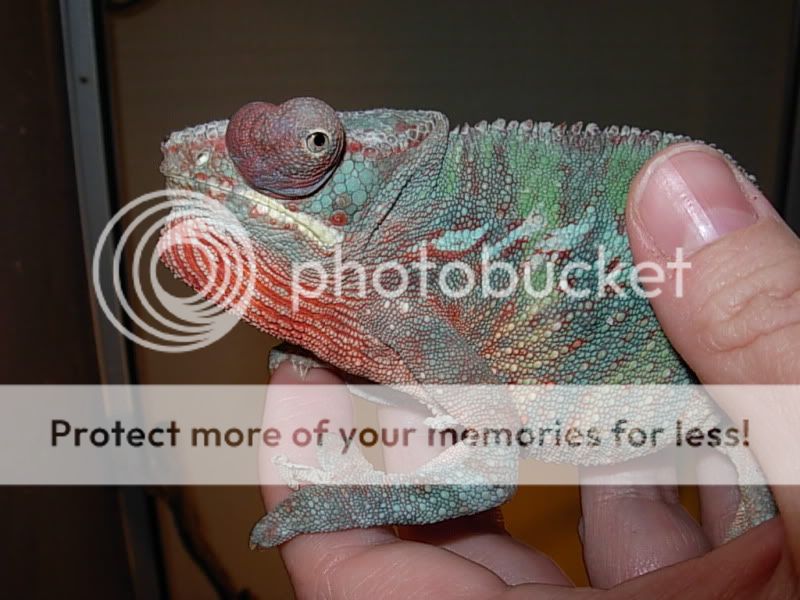
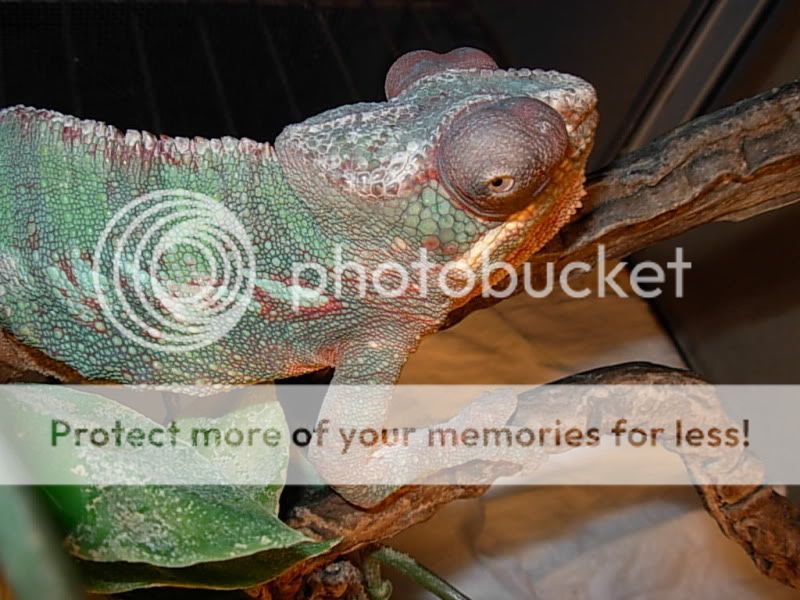
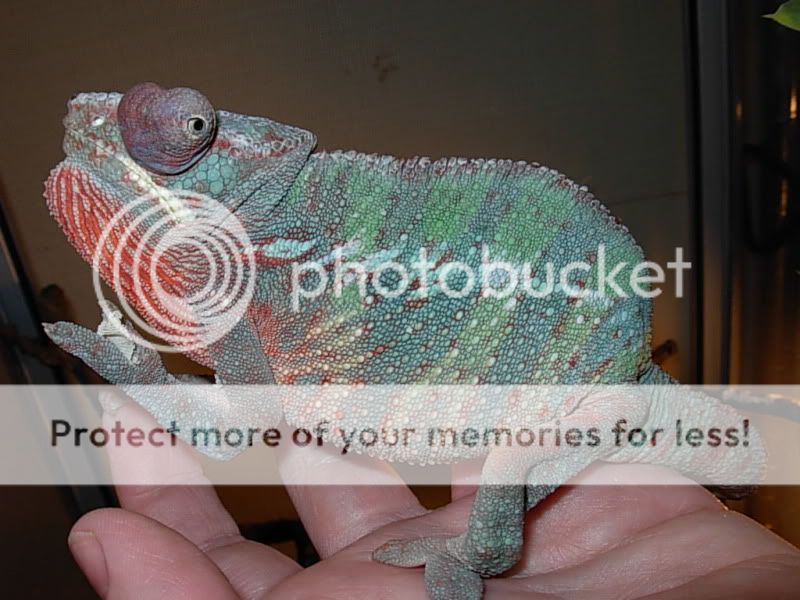
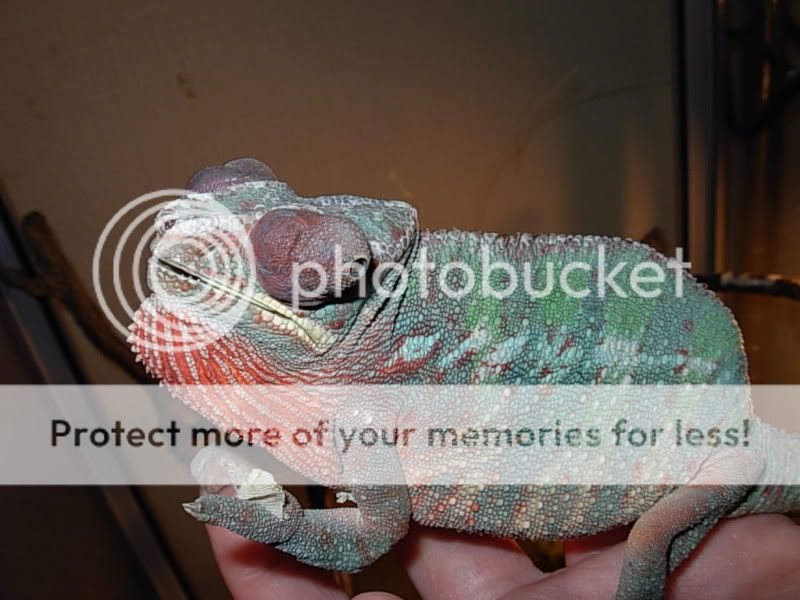
Hershey-I hatched Hershey in June 2008-my clutch of 69 that included Lombardi. He was the brown guy that everyone including the girls attacked whenever he came near. I still have 2 of his brothers here that are completely normal. Hershey was fine up until about 6 months of age when he stopped growing, his casque stopped growing, his legs started to bow, and he had trouble getting around. Hershey was supplemented and grown under the same UVB lights as everyone else. All of my chams also have the benefit of the great FL sunshine. Hershey however lives a far more normal life then Remy. He lives in a normal cage and eats on his own. He acts like a very normal chameleon. You can see in the pics his shortened and widened casque. I won't say he is tiny by any means, but he is thinner than his bulkier siblings and father, and only about 3/4 of their size.
